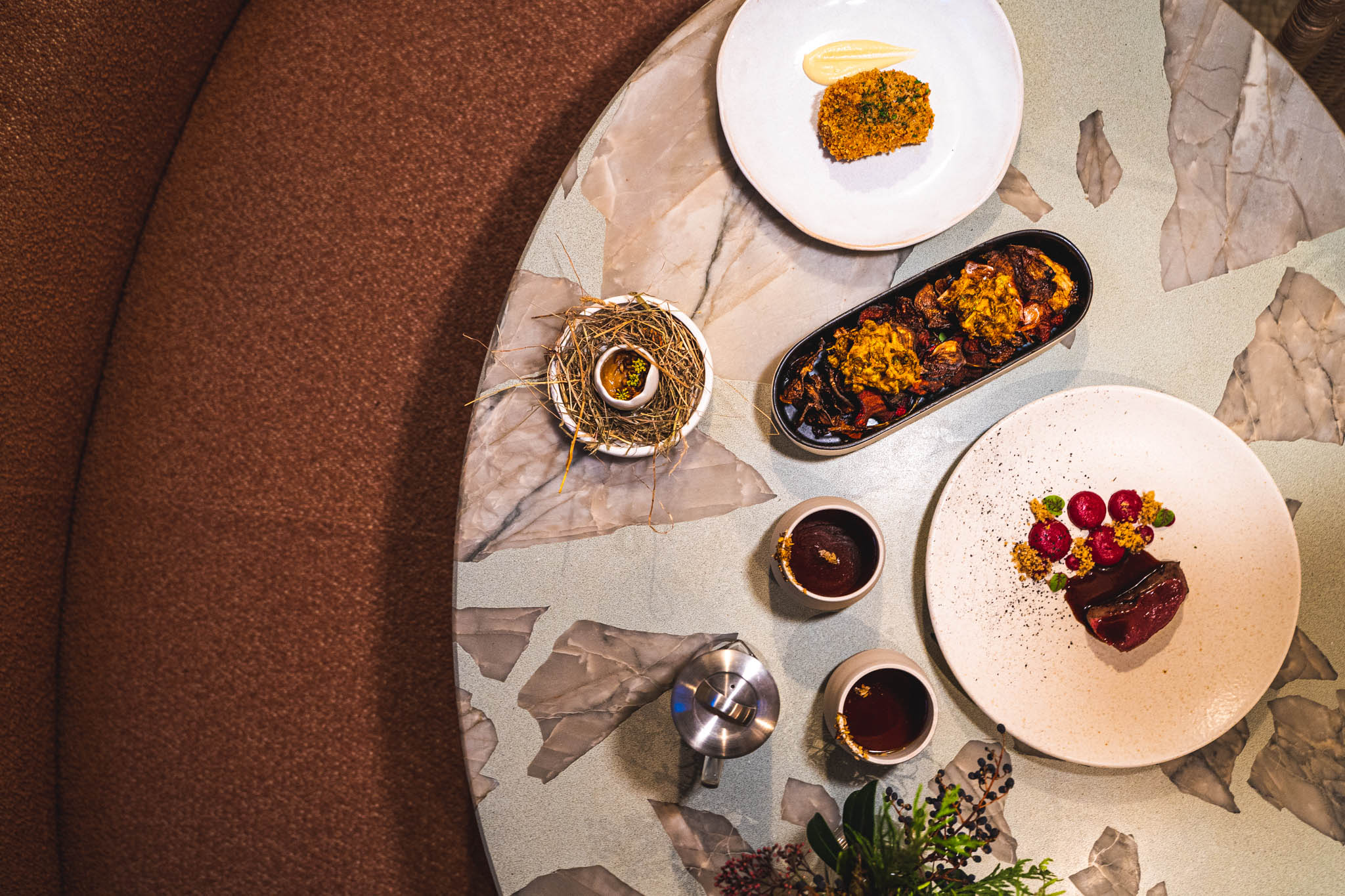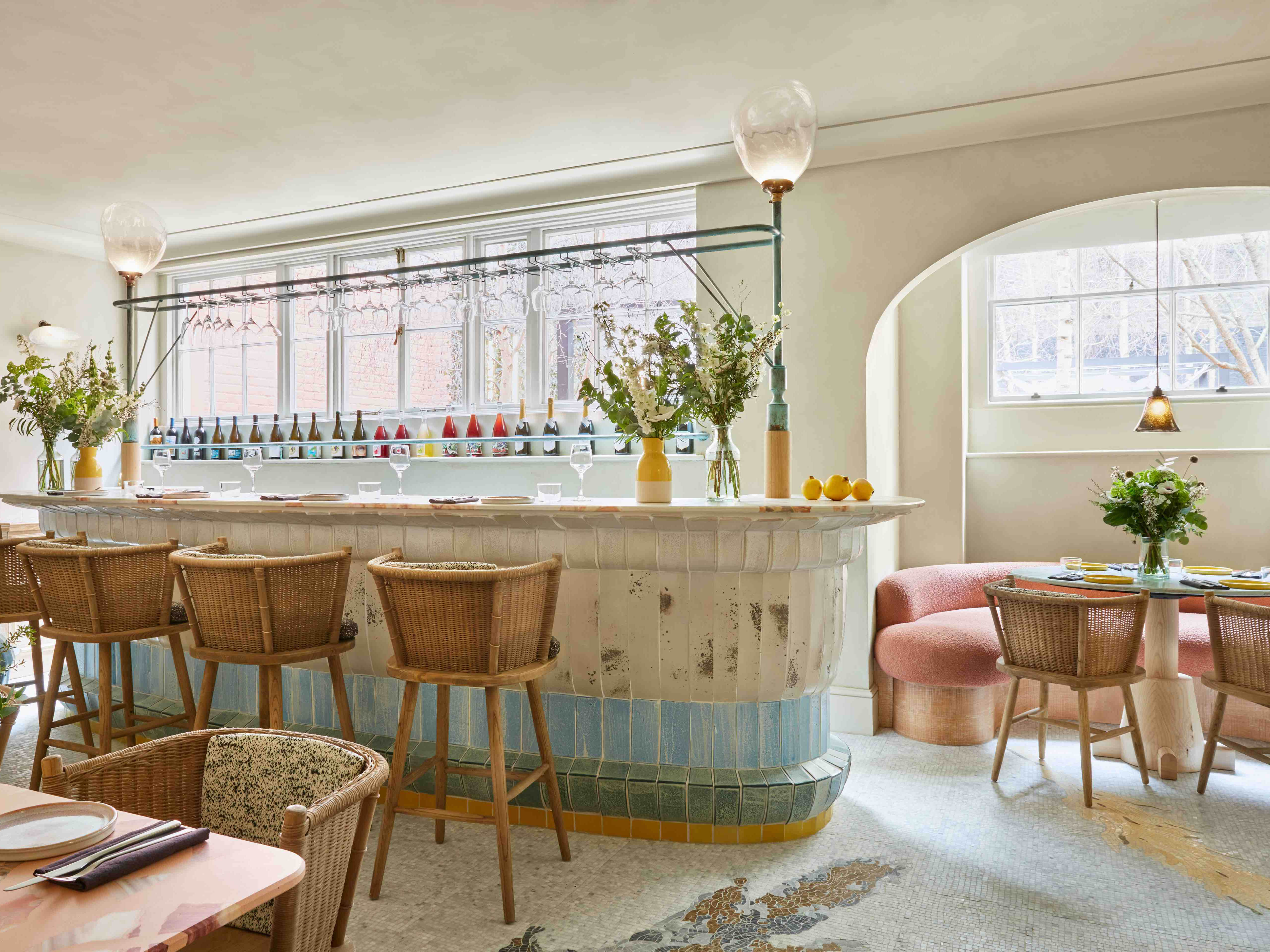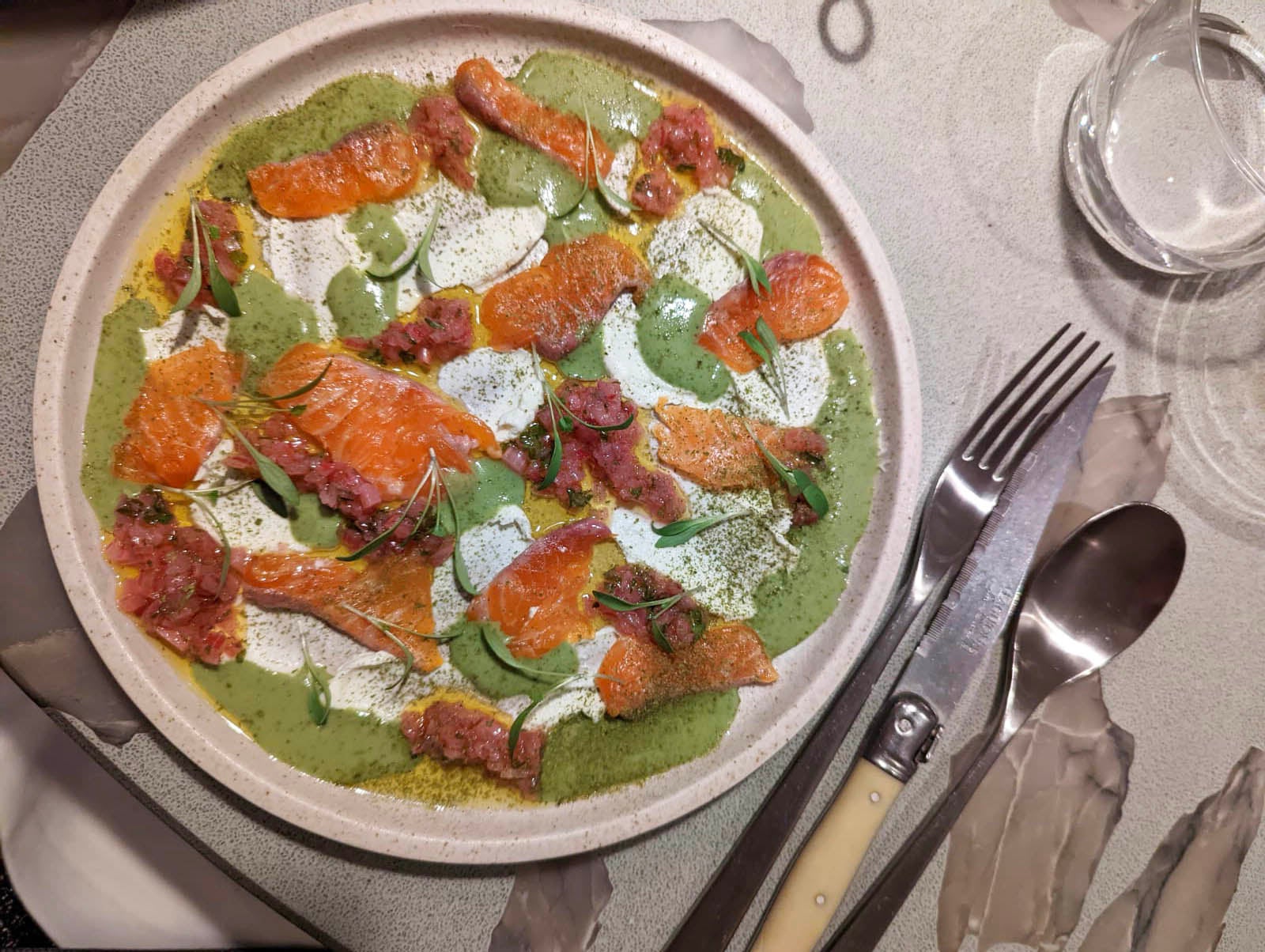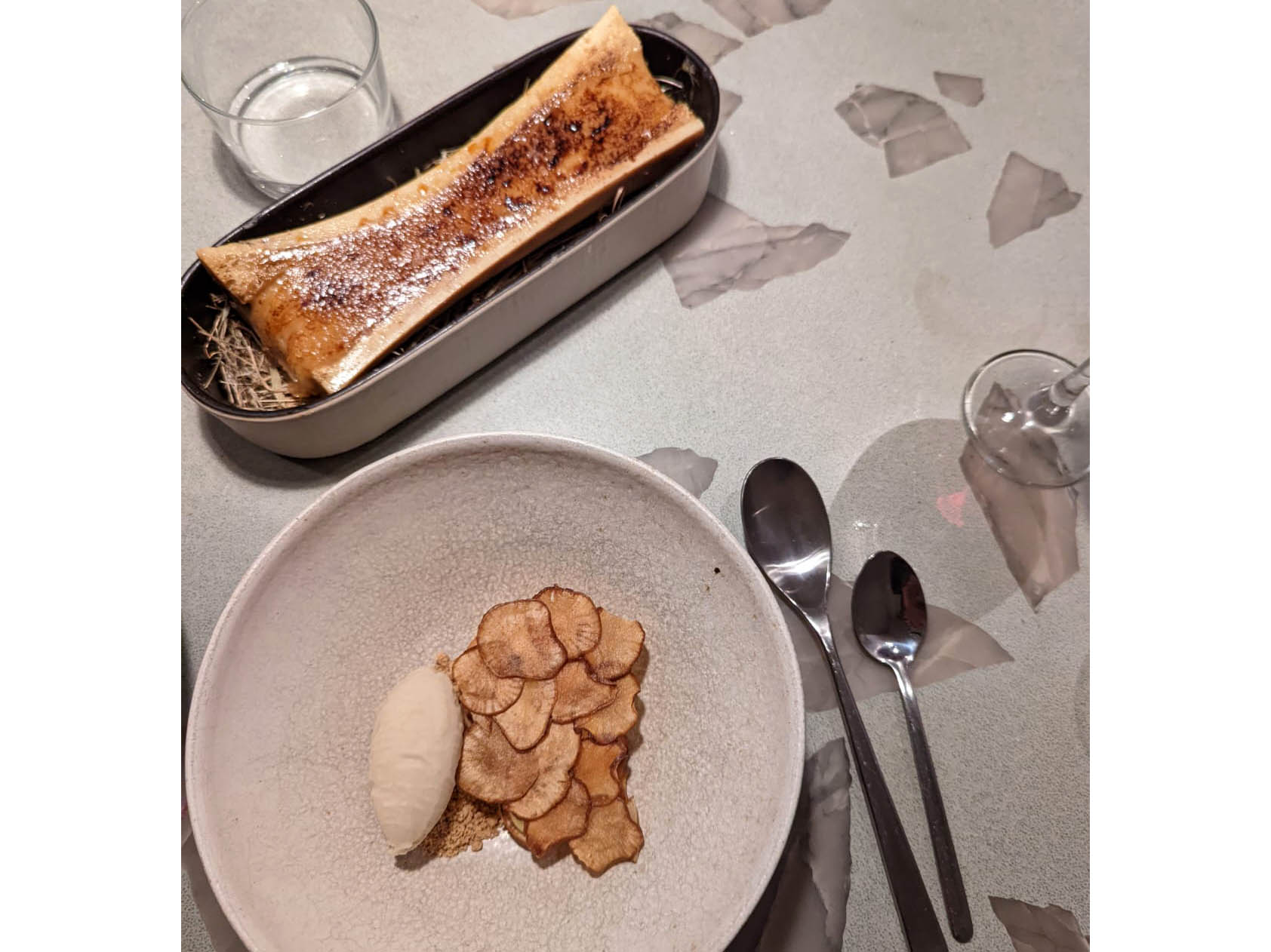Native, Mayfair: The menu challenging everything Veganuary stands for
Move over Veganuary, the first month of the year should be dedicated to raising awareness about regenerative agriculture. Emma Henderson digs in at a restaurant doing just that


So far, 2022 has not been the breath of fresh air we needed. Among the heavy news lines, there was a story last week about a Turkish farmer who decided to give cows VR headsets to make them feel like they were outside in sunny pastures, instead of inside barns. This made them apparently produce more milk. I’m not sure what could sound more insane and quite frankly, terrifying. In many ways, it’s the antithesis of Reganuary. If you’ve not heard of it, it’s the movement simultaneously challenging the environmental standpoint of Veganuary while also raising awareness of regenerative agriculture. Regen ag, as it’s referred to by many people in the industry, is seen as better for the planet than a plant-based diet.
One teaspoon of healthy soil will have more bacteria and microorganisms in it than there are people living on the plane
There’s no agreed definition of regen ag, but it’s essentially working with nature respectfully to increase biodiversity, instead of relying only on monoculture farming, using methods that are better for the environment, for the soil, for the animals, and ultimately for us. The soil’s health is imperative in it all, as one teaspoon of healthy soil will have more bacteria and microorganisms in it than there are people living on the planet. But, if it’s not looked after, soil can degrade and erode. Regenerating goes beyond “being sustainable”, which has become so overused and greenwashed, it’s almost lost meaning.
So this month, Native restaurant, set up by university friends Imogen Davis and Ivan Tisdall-Downes, has created a Regenerary a la carte menu based on those ideas. Ivan is in the kitchen and was originally self-taught, but he’s since spent time at River Cottage, which clearly draws parallels to his work now, and he also featured on the Great British Menu is 2020. Imogen deftly works front of house, and was listed in Code’s “100 most influential women in hospitality” list. She knows her wines too.

Native at Browns is the latest iteration after several popups – including one on Osea Island, off the Essex coast, where each day’s service ambitiously depends on the tide times – which opened in Mayfair’s boutique shop Browns in 2021. Hats off to anyone daring enough to open a restaurant during a global pandemic, but at least there’s no need to know your tide times. There’s still a small hindrance: of people actually being able to find it. It’s hidden (quite literally as we walked past it twice) behind the very bouji shop, which sells Gucci and Balenciaga worth my entire month’s rent. It seems a little at odds with the ethos of the restaurant.
Step inside the restaurant, however, and it all becomes clear. The tiny floor tiles are made of computer parts, the walls and bar use reclaimed clay, and the tables are also made from reclaimed materials.
The wine list is all natural and Imogen happily finds something to suit every taste and course on the menu. I had a fantastic spergola from Italy, which comes from a little family run vineyard using once discarded vines.
With only three dishes for starters and mains, it’s a slim, well-formed menu, focusing on seasonal and foraged ingredients, which both Ivan and Imogen are big on. We choose a few dishes to share. First up there’s the chef’s wasting snacks – designed to use up what’s left over in the kitchen, like little crispy pakora bites using peelings. The take on the sesame prawn toast topped with a little seaweed was the highlight, a delightful little well-balanced and moreish bite.

Unlike Veganuary, this isn’t a meat-free menu. Two of the six dishes include meat and are both main dishes. The first comprises perfectly pink little medallions of fallow deer haunch – meat that’s not intensively farmed – with smoked beetroot and pickled shiitake. It’s a classic wintery dish. The second is an offal cut, smoked ox tongue, which is diced and adorns the roasted cauliflower with wild garlic. It emphasises Ivan’s cooking style: he doesn’t only use prime cuts of meat, so there’s an added depth to the flavour of his food.
The first starter dish is wide pappardelle-like strips of thinly sliced celeriac (which is in season) that makes up the cacio e pepe, which comes cradling a yolk, and generously dusted with curds, giving it a creamy edge to an otherwise earthy take on the Italian classic.
The chalk stream trout ceviche is bright, zesty and zingy and puts to bed all those hangovers from the gout-inducing, heavy food of December
Next up, chalk stream trout ceviche in tiger’s milk is the sort of dish I constantly want to be eating in January. It’s bright, zesty and zingy and puts to bed all those hangovers from gout-inducing, heavy and rich food from December. All of this is topped with micro herbs for even more punch, which you can never have too many of in my opinion.
To get the full Native experience, Ivan suggests we order the wood pigeon kebab. “It’s my take on a kebab at the end of a night out,” he says, although it’s dialled up a few notches (OK, a lot) in terms of sophistication, with little chunks of slightly earthy game-flavoured meat, on a springy doughy bread, with tangy pickled cabbage. It’s far less sloppy than its kebab shop cousin, and absolutely worth coming back for.
Umami is key throughout many of the dishes we try. The miso cabbage is not to be missed – a chunky wedge doused in miso butter and slightly tinged on a grill for a crispy outer edge.

The wildest dish in terms of design is the bone marrowmel. Another Native classic (and our second deviation from the Regenuary menu), it’s a white chocolate caramel made with bone marrow that’s very much like a creme brulee, only it arrives in the middle of a long bone, which you… scrape out. It feels pretty neolithic – especially considering the sugar levels in there – but it’s so delicious (thanks to said sugar) that all weirdness is forgotten. We finish up with a fresh yet sweet Jerusalem artichoke mille-feuille, with hints of that savoury, slightly earthy flavour again in the little baked crisp-like slices of vegetable, alongside a crumble and a cool sorbet to round it off.
Although hard to find, it’s well worth wandering up and down the street a couple of times. I’ll be going back in summer to make the most of that courtyard. Regenuary isn’t just for January, though. The ethos, the practices and the excellent quality of regenerative agriculture is forever, not just for January, kids.
Native at Browns, 39 Brook St, London, W1K 4JE | nativerestaurant.co.uk | 020 7549 5999
Join our commenting forum
Join thought-provoking conversations, follow other Independent readers and see their replies
Comments


Bookmark popover
Removed from bookmarks